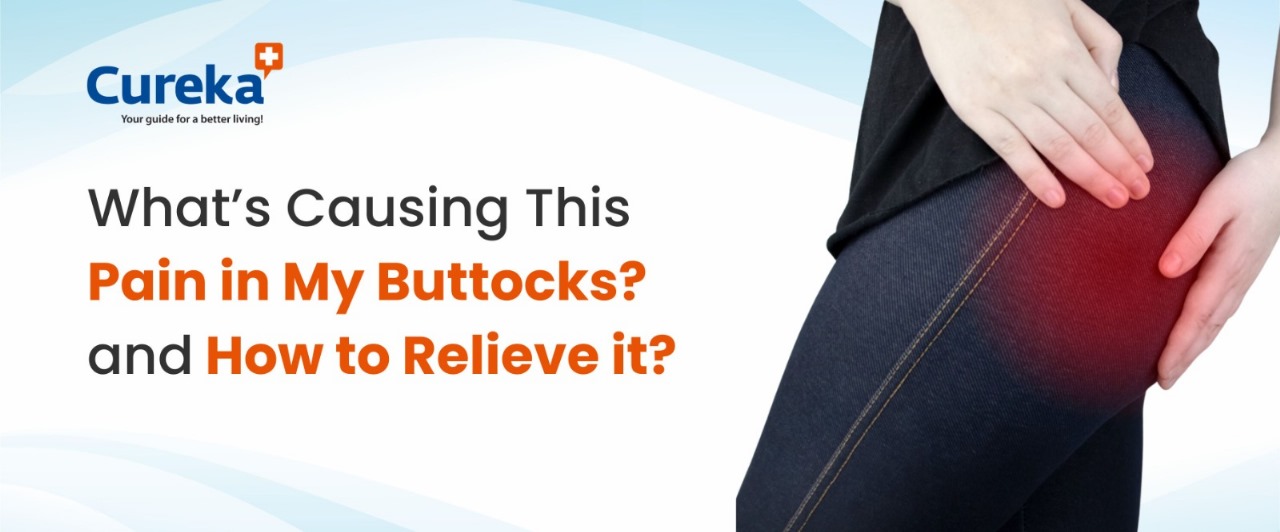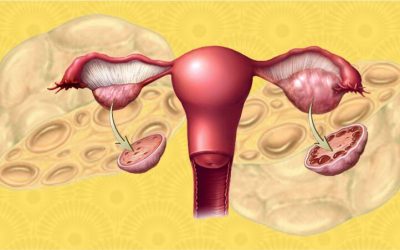What’s Causing This Pain in My Buttocks? and How to Relieve it?
Experiencing pain in buttocks? This can have several causes including overuse, injury or nerve compression. Buttock pain can be temporarily caused due to bruise or minor injury; but in some cases, it can result in a serious or long-term condition. Let’s discuss the causes for buttock pain in this blog.
Common Symptoms
Symptoms may vary depending on the cause and location of the pain and may include:
- Bruising or discoloration
- Numbness
- Swelling
- Tingling in the legs
- Sore tailbone
- Difficulty in moving sitting to standing position and vice versa
Various Causes for Buttock Pain
- Muscle Strains: Overstretching or tearing of the muscles in the buttocks, often due to sudden movements or overexertion, can result in pain and discomfort. This can be the result of exercising too much, not warming up before exercise, or moving suddenly or in an awkward way.
- Ligament Sprains: Similar to muscle strains, ligaments in the buttocks can also become stretched or torn, leading to pain. This can occur during activities that involve sudden twisting or bending.
- Sciatica: It is a sharp or burning pain that radiates down your sciatic nerve, which runs from your lower back through your buttocks and down each leg. It is often caused by herniated disk or narrowing of parts of the spine that compress the sciatic nerve. Sciatica is a condition occurred mostly in the age of 40 to 50.
- Herniated Disc: A herniated or slipped disc in the lower back may cause pain in the buttocks. The displaced disc material can press on nearby nerves, leading to pain and discomfort. Old age, obesity and working in a job where you lift or pull heavy objects are the common reasons.
- Piriformis Syndrome: The piriformis muscle, located deep in the buttocks, can become tight or inflamed, compressing the sciatic nerve and causing pain that mimics sciatica. This pain may get worse when you walk upstairs, run, or sit. You might also experience numbness or tingling.
- Osteoarthritis: Osteoarthritis or degeneration of hip joint can also lead to buttock pain, especially in older individuals. It may get worsen with movement or weight-bearing. Osteoarthritis of the hip can cause a dull, aching pain in the groin, hip sides, or back of the buttocks and make walking difficult.
- Bursitis: Inflammation of the bursa sacs (fluid-filled cushions) located between bones and soft tissues can cause pain, tenderness, and swelling in the buttocks. You may affected by bursitis in the ischial bursa if you injure the bursa or sit for a long time on hard surfaces.
- Fractures: A fracture or stress fracture of the pelvis, sacrum, or hip bone can cause significant buttock pain. Trauma or excessive impact can be contributing factors. This may ease with the treatment of the fracture over the time.
- Coccydynia: Injury in your tailbone can cause a tailbone fracture or bruise to the connective tissue around your tailbone, causing significant pain and discomfort, especially when sitting for a long time or on firm surfaces.
- Referred Pain: Sometimes, pain originating from other areas, such as the lower back or hips, can be felt in the buttocks due to nerve pathways.
Treatment Options
- Rest and Activity Modification: Giving your buttock muscles time to rest is essential for healing. Avoid activities that worsen the pain, as running, vigorous exercise, or prolonged standing, sitting, or walking.
- Physical Therapy: Gentle stretching of your hip muscles to alleviate pain. Strengthening exercises target weakened muscles, while stretching exercises improve flexibility. These routines promote healing and prevent future issues.
- Heat or Cold Therapy: Applying heat or cold to the affected area can provide relief from pain. Heat increases blood flow, relaxes muscles, and reduces stiffness whereas cold therapy helps numb the area and reduces inflammation. Use accordingly to address the concern.
- Medications: Over-the-counter nonsteroidal anti-inflammatory drugs (NSAIDs) can help alleviate pain and reduce inflammation. Don’t forget to follow the dosage and guidelines. Corticosteroid injections deliver anti-inflammatory medication directly to the painful area. They can provide temporary relief, but excessive use may lead to side effects.
- Lifestyle Changes: Practicing good posture, especially when sitting, helps reduce strain on the buttock muscles. Taking breaks to stand and stretch during long periods of sitting is beneficial. Engaging in regular exercise to maintain overall muscle strength and flexibility is also important.
- Surgical treatment: Surgery is considered if conservative treatments fail to provide relief. For instance, herniated discs causing sciatica might require surgery to alleviate pressure on the affected nerve.
- Others: Using a specialized seat cushion to relieve pressure from your tailbone area. Also, you can make dietary changes to improve your bowel regularity. Try to avoid foods that are high in sugar, salt or unhealthy fats.
Wrapping up
To determine the exact cause of your buttock pain, there are multiple considerations, your symptoms, medical history, physical examination, tests (like X-rays or MRI), and other diagnostic procedures. Treatment will depend on the underlying cause and might involve rest, physical therapy, medications, injections, also in severe cases, surgery. If you’re experiencing persistent or severe pain, it’s advisable to seek medical advice for proper evaluation and management.














